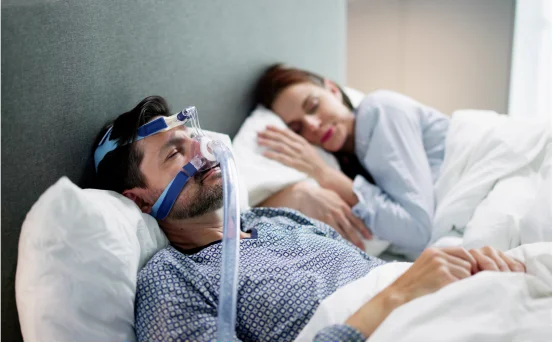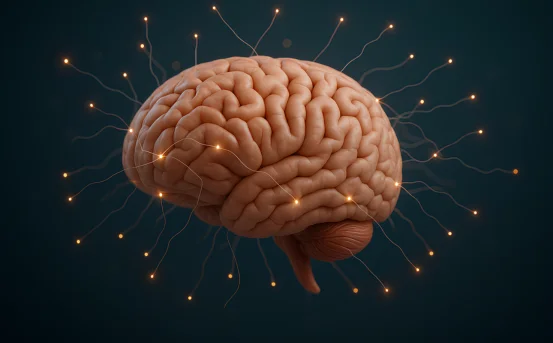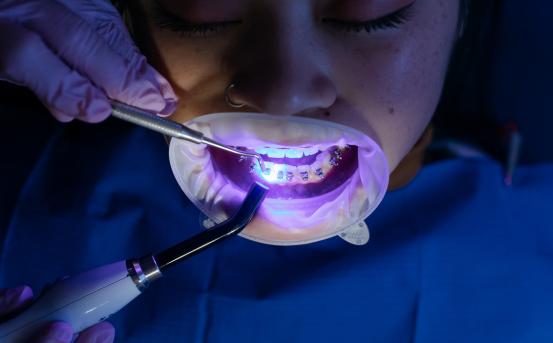Sleep is critically important for health. for many people around the world, sleeping disorders are a rampant issue. Often unnoticed, sleep apnea can be one of the most common but dangerous disorders to have. If it is ignored, it can lower the quality of life drastically, increasing the risk for other serious health concerns like high blood pressure, heart issues, or even strokes. The good news is that treatment options available for sleep apnea can significantly enhance symptoms and improve the quality of sleep.
Understanding Treatment for Sleep Apnea
The condition sleep apnea involves an individual ceasing to breathe repeatedly for short intervals while sleeping. These pauses can last anything from a few seconds to minutes, and can happen dozens or even hundreds of times in a night. The outcome is fragmented sleep that is of poor quality coupled with oxygen deprivation.
Obstructive sleep apnea (OSA) is the most common and most prevalent form of apnea. It results from blockage of the upper airway. Other forms include central sleep apnea which is CSA. This is caused from the brain not sending appropriate signals to the muscles authorized for breathing. Lastly, we have the complex combination of OSA and CSA which is known as complex sleep apnea syndrome.
Why Sleep Apnea Should Be Treated
There’s more to sleep apnea than just snoring or feeling drowsy. If left untreated, it can lead to:
- Chronic fatigue or excessive sleepiness during the day.
- Reduced cognitive functioning, including focus and memory recall.
- Altered moods, including depression and increased irritability.
- Greater risk of motor vehicle collisions due to sleepy driving.
- Cardiovascular diseases like hypertension and arrhythmias.
- Diabetes of the type 2 variety.
- Liver complications.
- Partners suffering from lack of restful sleep
Without question, the sooner you diagnose and treat a condition, the better and the same applies here. The health benefits can be life-changing.
Medical Approaches for Managing Sleep Apnea
- CPAP (Continuous Positive Airway Pressure) :- Considered the gold standard for treating moderate to severe obstructive sleep apnea (OSA), CPAP requires users to wear a mask over their nose or mouth during sleep. A machine is used which provides a constant stream of air to the patient.
Pros:
- Prevention of airway collapse.
- Improves sleep quality, alertness during the day, and overall functioning.
- Reduces risk of cardiovascular disease.
Cons:
- Many patients will not tolerate the mask which leads to poor compliance.
- Adjustment period may be required for those using it for the first time.
Optimizing the approach through collaboration with specialists can lead to better results, although teamwork is needed to identify preferred mask style and pressure settings
- Bi-level Positive Airway Pressure (BiPAP) :- Like all other forms of sleep aids, breathing apparatus have their own stipulations. BiPAP machines have two levels of pressure, one for inhalation and the other for exhalation. This system comes as a great relief for individuals who struggle with CPAP or suffer from central sleep apnea. Also, it suits individuals with specific neuromuscular disorders and some heart diseases that involve irregular breathing patterns.
- Oral Appliance Therapy :- For patients struggling with mild to moderate OSA, or patients that can’t tolerate CPAP, these dental devices that reposition the jaw and open the tongue are prescribed. These dental devices are usually custom made by the dentist, which means they are made according to the patient’s mouth specifications.
- Effective for low intensity apnea cases
- Portable and easy to use
- Quick and quiet operation
- They do not need any electrical power supply.
Adjustments will be made during follow up appointments with the dentist.
- Surgical Treatment Options :- When all other treatment options are not effective, these options spring into action. The focus here is to remove or realign tissues that are obstructive to the airway. Common surgeries include:
- Uvulopalatopharyngoplasty (UPPP) :- Clears excess tissue in the throat region.
- Genioglossus Advancement (GA) :- Corrects the position of the muscle of the tongue preventing its collapse.
- Maxillomandibular Advancement (MMA) :- Advances the upper and lower jaw forwards.
- Tonsillectomy/Adenoidectomy :- Commonly done for children to clear the airway.
- Inspire Therapy (Hypoglossal Nerve Stimulation) :- An adjustable implantable device that fires intermittent stimulation pulses during sleep to an anterior tongue muscle, geniohyoid, to prevent collapse of the airway and keep it open.
Surgical intervention as a treatment option is often a last resort. In considering surgery, the individual’s facial structure and the degree of severity of apnea are important factors.
Lifestyle Changes That Aid
Healthy lifestyle modifications are beneficial for effective medical treatments.
- Weight Management :- Additional weight, particularly around the neck and chest area, tends to pose a greater threat of obstructing the airways. Even modest weight loss diminishes the severity of apnea or resolves mild cases entirely.
- Positional Therapy :- Positional Therapy treats individuals who present Obstructive Sleep Apnoea predominantly in the supine position by employing positions other than supine through the use of devices or pillows.
- Avoid Alcohol And Sedatives :- Relaxation of the throat muscles poses an increased risk of the airway being blocked. Avoiding these substances relaxes the throat muscles, especially when used in the evening, and therefore, these options greatly opt for the symptoms.
- Smoking Cessation :- Smoking leads to inflammation and fluid retention in the upper airway, which causes apneic episodes. Improving the quality of sleep and reducing the severity of apneic episodes is one of the many benefits of smoking cessation.
- Establish a healthy sleep routine :- Getting adequate, consistent sleep improves energy levels substantially while also lessening the frequency of apnea episodes.
Treatment for Central Sleep Apnea
Central sleep apnea (CSA) differs from obstructive sleep apnea in that it is not caused by an obstruction in the airway. CSA is more focused on the brain signals telling a person to breathe. Possible treatment options for CSA include:
- Adaptive Servo-Ventilation (ASV) :- An advanced Adaptive Servo Ventilation where air pressure is delivered more intelligently, changing as needed flexibly to the person’s breathing.
- Supplemental Oxygen :- Used to appropriately maintain oxygen levels during sleep.
- Medications :- Certain medications can specifically help with breathing or address the underlying issues such as heart failure.
For CSA, finding and managing the underlying cause is the most essential aspect for effective treatment.
Monitoring and Follow-Up Care
Sleep apnea is a condition that is chronic in nature, and often requires ongoing management. Having regular follow-up appointments is important in order to:
- Assess range of outcomes achieved from treatment provided
- Change up device or pressure settings and recalibrate
- Check for any adverse effects, complications, or problems
- Reiterate in more detail lifestyle changes
In some cases, it may be necessary to perform repeat sleep studies to reassess severity or adjust treatment.
Conclusion
Addressing sleep apnea goes beyond just ameliorating sleep; it also helps in defending your heart, brain and overall health. There are many options to choose from CPAP therapy, oral appliances, surgical interventions or lifestyle modifications. This allows patients to seek a more personalized and tailored approach that suits them the best.
If you or someone close to you has symptoms such as heavy snoring, sleep gasps, or feeling tired during the day, seek medical attention right away. It is important to get evaluated with a healthcare professional or sleep specialist so that the underlying issue can be identified, and treatment can be initiated to help you or your loved one achieve the restorative sleep you both deserve.























